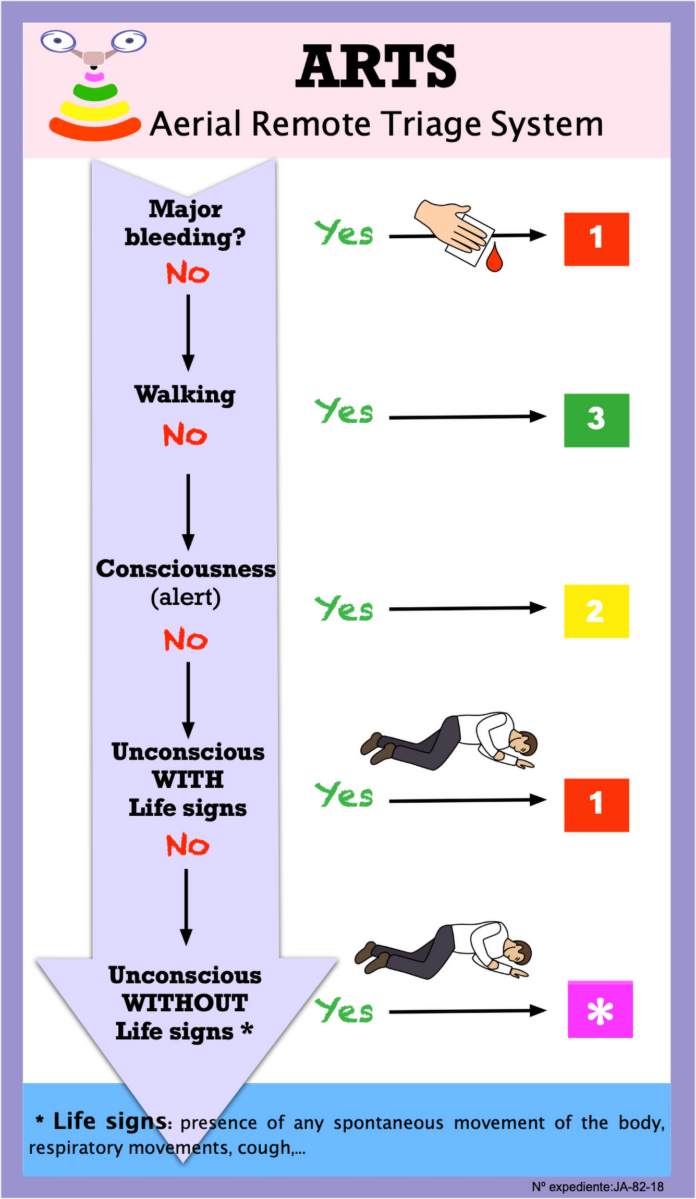Article Excerpt
This algorithm assesses (in this order): major bleeding, walking, consciousness and signs of life; and then classify the injured people into several priority categories: priority 1 (red), priority 2 (yellow), priority 3 (green) and priority * (violet). It includes the possibility to indicate save-living interventions to injured people and bystanders, like the compression of bleeding injuries or the adoption of the recovery position. The Aerial Remote Triage System may be a useful way to perform triage by drone in complex emergencies when it is difficult to access to the scene due to physical, chemical or biological risks.
Analysis
Although A.I. is still developing, the use of A.I. in a triage system of a hard to reach area not only provides a way to virtually access the area and properly allocate resources to said area, but also may take the pathos out of triage which could possibly lower the accuracy of a triage. Of course using A.I. to determine who to save, who deserves care, and who is unable to be saved is not a system that should be taken lightly. After all, this isn’t just an experiment, we’re dealing with people’s lives. So naturally, this process should be examined with extreme scrutiny before implementation.
This process does have limitations. Although it provides the necessary authorities with the information on quantities of help to allocate to an area, it still doesn’t make it easier for the physicians to travel into these extreme scenarios. Even more importantly, it doesn’t provide any answers on how to get the injured out of these extreme geographical locations.




